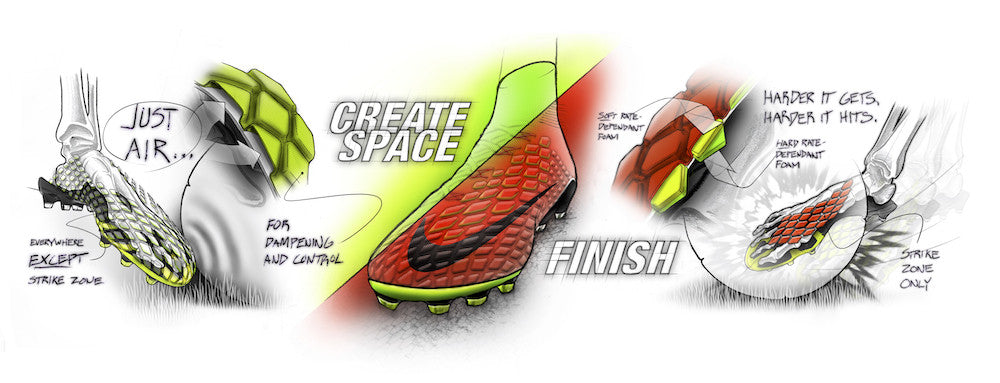Boot Tech Breakdown: Nike Hypervenom Phantom III

The most critical components of every striker's arsenal are the focus of Nike's third generation Hypervenom Phantom. The entire boot has been engineered for cutting and striking– allowing every striker to reach their maximum goal-scoring potential. Major improvements have been made to the upper, texture and soleplate.
The most noticeable design changes to the upper are the use of Flyknit throughout the entire boot, and the new texture that utilizes foam pods instead of the dimpled design featured predominately in previous iterations of the Hypervenom. While the appearance of the new "pod" formation is a nod to the old texture, the composition of the third generation texture is entirely new to boot innovation.

The pods react differently to the rate at which a ball is received or struck. When receiving a pass, the pods will soften and create a dampening effect on the ball. When striking at high speeds, the pods will become rigid to truly launch the ball.
Two additional redesigns of the Flywire cables and the Dynamic Fit Collar also elevate the Phantom II to the next level. Three meters of Flywire cables (compared to 1m used in the second generation) now wrap around the middle of the boot and through each individual eyelet, allowing for a player to customize the amount of tension around their foot. The Dynamic Fit Collar is now cut at a diagonal to compensate for the extreme angle that ankles take during cutting.

Two entirely new features include the low-cut version of the boot, and the new Hyper-Reactive soleplate. For the first time in a low-cut boot, the upper of the Phantom III is all Flyknit. It seems that Nike paid attention to the trend of players cutting off the Dynamic Fit Collar because they wanted the premium upper without ankle distraction. The new soleplate configuration provides both support and flexibility, and the traction pattern was developed for lateral cuts.
Nike's Hypervenom silo is available here.
Photos courtesy of Nike.

Comments
0 Comments